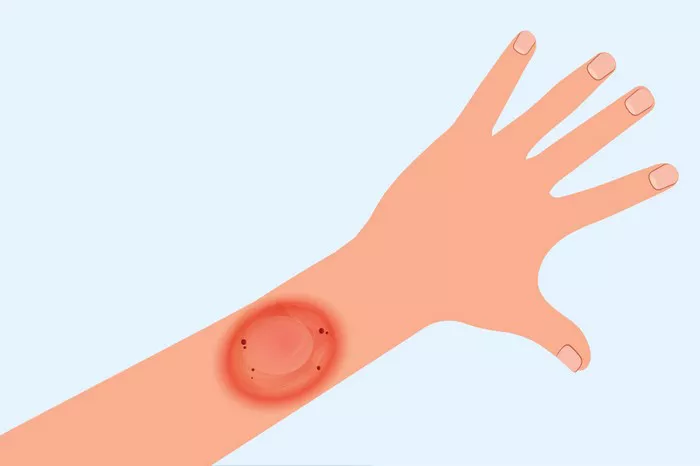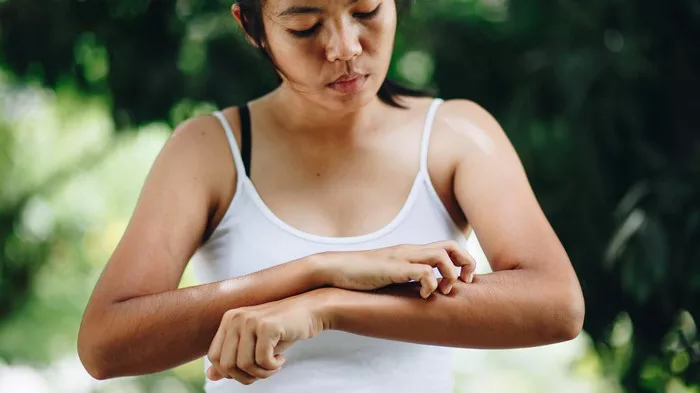Ringworm, despite its misleading name, is not caused by a worm but by a group of fungi known as dermatophytes. This common fungal infection affects the skin, scalp, and nails, leading to a range of uncomfortable symptoms, the most notorious of which is itching. Understanding why ringworm causes itching requires a deep dive into the biological mechanisms at play, the body’s immune response, and the nature of the fungi involved. This article will explore these aspects in detail, providing a comprehensive explanation of the itchy sensation associated with ringworm.
The Fungal Invaders: Dermatophytes
Dermatophytes are a group of fungi that thrive on keratin, a protein found in the outer layer of the skin, hair, and nails. The three main genera of dermatophytes responsible for ringworm infections are Trichophyton, Microsporum, and Epidermophyton. These fungi are highly contagious and can be transmitted through direct contact with infected individuals, animals, or contaminated objects.
The Infection Process
When dermatophytes come into contact with the skin, they adhere to the keratinized cells on the surface. The fungi then secrete enzymes called keratinases, which break down keratin, allowing them to invade and colonize the epidermis. This invasion disrupts the normal structure and function of the skin, leading to the characteristic red, scaly, and ring-shaped rash of ringworm.
The Immune Response and Inflammation
The itching associated with ringworm is primarily a result of the body’s immune response to the fungal infection. The skin’s immune system detects the presence of the dermatophytes and mounts a defense to eradicate them. This immune response involves various cells and molecules that contribute to inflammation and the sensation of itching.
Activation of Immune Cells
When the fungi invade the skin, immune cells called keratinocytes, which are the primary cells in the epidermis, recognize the fungal components as foreign. Keratinocytes then release signaling molecules called cytokines, such as interleukin-1 (IL-1) and tumor necrosis factor-alpha (TNF-α). These cytokines recruit other immune cells, including Langerhans cells, macrophages, and T-cells, to the site of infection.
Inflammatory Mediators
The recruited immune cells release additional cytokines and chemokines, amplifying the inflammatory response. Among these mediators, histamine plays a crucial role in causing itching. Histamine is released from mast cells, which are a type of immune cell present in the skin. When histamine binds to its receptors on sensory nerve endings, it triggers the sensation of itching.
Other inflammatory mediators, such as prostaglandins and leukotrienes, also contribute to the itching and inflammation. These substances increase blood flow to the affected area, causing redness and swelling, and sensitize nerve endings, making the skin more prone to itching.
SEE ALSO: Does Hand Sanitizer Kill Ringworm Fungus?
Sensitization and Itch Perception
The sensation of itching, or pruritus, is a complex process that involves the activation of specific nerve fibers called pruriceptors. These nerve fibers are present in the skin and are sensitive to various itch-inducing stimuli, including histamine.
Histamine-Induced Itch
Histamine is one of the most well-known itch mediators. When histamine is released during an immune response, it binds to histamine receptors (H1 receptors) on the surface of pruriceptors. This binding activates the pruriceptors and generates electrical signals that are transmitted to the brain via sensory nerves.
Non-Histaminergic Itch
In addition to histamine, other pathways can induce itching. For example, certain cytokines, such as IL-31, can directly activate pruriceptors or enhance their sensitivity to other itch-inducing stimuli. The interaction between different inflammatory mediators and sensory nerves creates a complex network that contributes to the persistent itching associated with ringworm.
Central Processing of Itch
Once the electrical signals generated by pruriceptors reach the spinal cord, they are transmitted to the brain, where they are processed and perceived as itching. The brain’s perception of itch is influenced by various factors, including the intensity and duration of the stimuli, as well as psychological and emotional states. This explains why itching can sometimes be more intense at night or when a person is stressed or anxious.
Secondary Factors Contributing to Itch
Apart from the direct effects of the immune response and inflammation, several secondary factors can exacerbate the itching associated with ringworm.
Skin Damage and Barrier Dysfunction
The fungal invasion and the ensuing inflammatory response damage the skin’s protective barrier. This damage makes the skin more susceptible to further irritation and dryness, both of which can intensify itching. Scratching, which is a common response to itch, can worsen this damage, creating a vicious cycle of itching and scratching.
Secondary Infections
Scratching the itchy lesions of ringworm can break the skin, creating entry points for bacteria. Secondary bacterial infections can complicate the condition, leading to additional inflammation and itching. The presence of bacteria further activates the immune system, perpetuating the cycle of itching and inflammation.
Psychological Factors
Itching is not merely a physical sensation; it has a psychological component as well. The persistent itching of ringworm can lead to significant discomfort and distress, which in turn can heighten the perception of itch. Psychological stress and anxiety can exacerbate the sensation of itching, creating a feedback loop that makes managing the condition more challenging.
SEE ALSO: How Do I Know If My Ringworm Is Going Away?
Treatment and Management of Itch in Ringworm
Effective treatment of the itching associated with ringworm involves addressing both the underlying fungal infection and the inflammatory response that causes itching. Several therapeutic approaches can help alleviate the symptoms and reduce the itching.
Antifungal Treatments
The primary treatment for ringworm is the use of antifungal medications. Topical antifungals, such as clotrimazole, miconazole, and terbinafine, are commonly used to treat localized infections. For more extensive or stubborn infections, oral antifungal agents like fluconazole or itraconazole may be prescribed. By eliminating the fungal infection, these treatments help reduce the source of inflammation and itching.
Anti-Inflammatory and Antipruritic Treatments
To manage the itching and inflammation, anti-inflammatory and antipruritic treatments can be used in conjunction with antifungal medications. Topical corticosteroids, such as hydrocortisone, can help reduce inflammation and alleviate itching. However, their use should be limited and monitored, as prolonged use can weaken the skin and potentially worsen the infection.
Antihistamines, such as diphenhydramine or cetirizine, can help control histamine-mediated itching. These medications block histamine receptors, reducing the sensation of itching. Non-steroidal anti-inflammatory drugs (NSAIDs), such as ibuprofen, can also help reduce inflammation and pain associated with severe itching.
Moisturizers and Barrier Repair
Maintaining skin hydration and restoring the skin barrier are crucial for managing itching and preventing further damage. Regular use of moisturizers can help keep the skin hydrated and reduce dryness, which can exacerbate itching. Products containing ceramides, urea, or glycerin are particularly effective in restoring the skin barrier and improving hydration.
Behavioral and Psychological Interventions
Given the psychological component of itching, behavioral and psychological interventions can be beneficial in managing the symptoms. Techniques such as cognitive-behavioral therapy (CBT) can help individuals develop coping strategies to deal with the distress caused by itching. Stress management techniques, including relaxation exercises and mindfulness, can also help reduce the perception of itch.
Conclusion
The itching associated with ringworm is a multifaceted phenomenon involving the interplay of fungal infection, immune response, and skin damage. Dermatophytes invade the skin and elicit an inflammatory response that leads to the release of various itch-inducing mediators, including histamine. The activation of pruriceptors and the central processing of itch signals contribute to the perception of itching. Secondary factors, such as skin barrier dysfunction, secondary infections, and psychological factors, further exacerbate the sensation.
Effective management of ringworm-related itching requires a comprehensive approach that addresses both the fungal infection and the inflammatory response. Antifungal treatments, anti-inflammatory and antipruritic medications, skin barrier repair, and psychological interventions all play crucial roles in alleviating the symptoms and improving the quality of life for affected individuals.
Understanding the complex mechanisms behind the itching in ringworm not only provides insights into the nature of this common fungal infection but also underscores the importance of a holistic approach to treatment. By addressing both the physical and psychological aspects of itching, healthcare providers can offer more effective and compassionate care to those suffering from this irritating condition.
Related Topics:


























